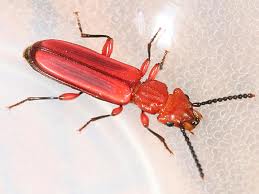Today is Panbanisha's birthday.
Panbanisha is another bonobo I took care of in Georgia. While I was doing my post on Kanzi (see
Keeping Kanzi), I realized all my favorite bonobo stories were about Panbanisha. They definitely have different personalities. Kanzi is the gregarious one and always up for meeting new people, while Panbanisha is the introspective one. As a youngster, Panbanisha was part of a study comparing the language learning capabilities of a bonobo and a chimpanzee, Panzee. Panbanisha's language abilities are actually better than Kanzi's, but Kanzi is the one who gets the limelight probably because he was the first bonobo to use lexigrams and he totally enjoys the attention. I don't think Panbanisha is as comfortable in the spotlight.

When I first started taking care of Panbanisha in the main building, she was a bit distrustful. She would work with the researchers during most of the day, and then I would feed her dinner and 'put her to bed' in the late afternoon. In the beginning, I would sit until she came through the tunnel from the tool room into the sleeping area and down the ladder. Then I would ask her if it was okay to close the door that allowed access to the tool room. When you ask Kanzi or Panbanisha a yes or no question and there's no keyboard available, if you get silence, that means no. If they reply with a vocalization, that means yes. So I would wait until Panbanisha would vocalize and then shut the door. As time went on and Panbanisha and I got to know each other better, I could simply tell her I was closing the door, but I would still wait until she got all the way down the ladder.

There was only one exception to the routine and that was when Panbanisha was very, very pregnant with her second son Nathan. At that time, her first son, Nyota was a few years old. One night about a week before Nathan was born, Panbanisha was obviously exhausted and didn't even want to go down the ladder. I closed the door while she was still in the tunnel and then hand fed her dinner - the first and only time I did that. I got a big spoon and stood on a footstool to reach where she was. A couple of times I also tried to give a little food to Nyota, but each time Panbanisha would take hold of the spoon and pull it toward herself. In that instance she wanted all of the attention on her. I know she really appreciated the special treatment.

One of the graduate students that also worked with the bonobos was a woman named Severine. Severine was blind. One day we were interacting with Liz who was in with Panbanisha, and Severine and I were in a room with a big window where we could watch. We didn't have the light on because it was easier for me to see Liz and Panbanisha without a lot of reflection and, of course, Severine didn't need a light. We were talking to Panbanisha and she was answering on the keyboard. I forget now what question Severine asked her, but Panbanisha pointed to a lexigram on the keyboard. Then Liz tried to explain that Severine couldn't see her answer. Panbanisha then pointed to the 'light' lexigram. We thought she was telling us to turn on the light so Severine could see. Liz then had to explain to her that even the light wasn't going to help.

One day there were several of us back in the sleeping area with Panbanisha and Nyota. Nyota had a habit of reaching out and pulling people's hair. Even though he was small, he would really give it a yank, so it hurt as well as being really annoying. This day I'd finally had enough, and without thinking I just blurted out, 'Nyota, if you don't stop pulling my hair, I'm going to bite your little fingers." (Grabbing a hand and biting fingers is bonobo punishment and a way of saying, 'don't do that'!) Of course, I had no intention of actually biting Nyota, especially with Panbanisha right there. And I certainly wouldn't have hurt him; I was just threatening him. I don't know if Nyota understood what I said, but Panbanisha certainly did. She suddenly got a very worried look on her face. And after that any time Panbanisha saw Nyota pull my hair, she would grab his hand and bite his fingers for me! I guess she thought she'd do it before I had the chance.

The other incredible thing about Panbanisha is that she started drawing the lexigrams on the floor with chalk. The drawings weren't Van Gogh's, but you could tell what she was trying to draw. And I believe she did this all on her own without any prompting from caretakers.
Just like children, the bonobos always said exactly what was on their minds. I was making DVD copies of some research tapes of the bonobos. I was in a room where there was a window into the area where Panbanisha was. She came over to the window and started watching the tape I was copying. The bonobos love watching TV or movies, and especially tapes of themselves. I said hello and tried to engage her in some conversation. There was a transparent copy of the keyboard taped to the window. She looked at me and then pointed to the 'quiet' lexigram, reminding me of proper movie theater etiquette!
Working with the bonobos in Georgia was truly an incredible and humbling experience.
Update: Unfortunately, Panbanisha passed away November 6, 2012. You can read the story
here.
For more on bonobos, check out 'Bonobo: The Forgotten Ape' on my Book Recommendations page.

















































